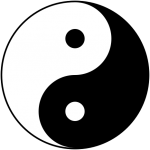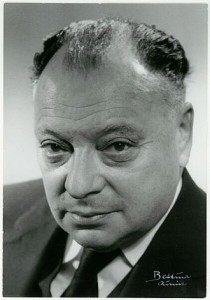Wave-Particle Duality
Wave-particle duality was discovered in the early 20th Century, as physicists delved deeply into the nature of matter and energy. The deeper they dug, the less matter behaved the way it was expected to by classical mechanics. This applied to energy as well, including light energy.
There is a long history of different theories about the nature of light. In ancient Greece, Aristotle promoted a theory of light that is wavelike in nature, while Democritus held that light (like everything else in his theory of the natural world) was composed of particles. Fast forward to the 17th Century, where Christiaan Huygens and Isaac Newton proposed competing theories of light. Huygens claimed that light consists of waves, while Newton claimed that light consists of particles.
Newton’s position on the matter held sway for a time. Later, with the work of Fresnel and Maxwell and others, the wave theory again took over. The beginning of the 20th Century saw the rise of quantum mechanics, and the nature of light again became a hot topic of debate. Max Planck introduced the idea of “light quanta” to resolve theoretical issues with black-body radiation, and in 1905 Einstein used those results for his explanation of the photoelectric effect, using light quanta or “photons” to explain the observed discrete energy states.
So who’s right? Is light composed of waves, or particles?
It turns out that we must consider light in both lights  . Modern physics treats light as both a particle and a wave. In fact, any physical object or energy has both a wave and a particle aspect. This is not only true at the atomic level; even large bodies, it turns out, have wave properties.
. Modern physics treats light as both a particle and a wave. In fact, any physical object or energy has both a wave and a particle aspect. This is not only true at the atomic level; even large bodies, it turns out, have wave properties.
See the video here for a demonstration of the double slit experiment performed one photon at a time. It is important to note that performing this experiment one photon at a time shows that light behaves as both a wave and a particle, by raising some fundamental questions, like: since the photons come one at a time, how can they display an interference pattern? They could not have interfered with one another, since each one was a separate photon sent independent of any other! Yet somehow, they end up grouping themselves into a classic wave interference pattern. This experiment unequivocally demonstrates wave-particle duality which, according to Richard Feynman, “has in it the heart of quantum mechanics”.
Duality in Philosophy and Religion
The concept of duality is a basic one in human thinking. Some common dualities are:
black & white
good & evil
male & female
mind & body
order & chaos
life & death
active & passive
earth & sky
up & down
right & left
yin & yang
Western thinking tends to think of dualities as opposites, and tends to prefer one over the other, e.g.: white over black; good over evil; order over chaos; right over left; etc.
Eastern thinking tends to see duality as an issue of balance rather than good vs. bad, and to strive for synthesis rather than preferring one over the other (with the possible exception of good vs. evil). For example, yin and yang each contain the seed of the other, as can be seen in the yin-yang symbol:
The concept of yin and yang is very important in Chinese philosophy and in particular in Taoism, which is more of a naturalistic philosophy than a religious or moralistic outlook. In essence it says that everything in the universe contains two basic principles of yin and yang, which are also often interpreted as light and dark, or male and female. Both are essential and the goal is to harmonize them.
In Indian philosophy, the dual nature of reality is represented by a spiritual reality, i.e. the Supreme Self, or God, the absolute truth of the Universe; vs. the dependent worldly reality, where individual souls exist, each perceiving their own reality.
The philosophical split between mind and body was firmly entrenched in Western philosophy by the French philosopher and mathematician René Descartes, with his famous quote “Cogito ergo sum” or, in English, “I think, therefore I am”. And on the moral philosophy front, Western religion has a strong basis in the idea of good vs. evil, believing that ultimately good will triumph over evil.
Discussion
Modern physics requires that we accept the dual nature of matter and of energy (which, you will recall, are equivalent, as expressed in Einstein’s equation E = mc²). Particles have wave properties, and energy has particle properties. There are many competing theories on what is the underlying reality represented by these physical findings, but the findings themselves stand.
These findings have also affected how we view reality at the philosophical level. Some have started to reach back to more ancient ways of looking at the world, to take a more holistic view rather than the strictly analytical view that has characterized the classical scientific approach.
Even other sciences have begun to bump up against the limits of dualistic thinking. Modern medicine still tends to treat mind and body as separate entities. But current treatments for things like depression tend to blur that line, depending as they do on altering the physical functioning of the brain in order to alleviate what has previously been seen as purely mental distress.
One of the best known effects of classic double blind studies is the so-called “placebo effect”. In a double blind medical study, one group of patients is given the medication that is being studied, while a second group of patients is given a fake medication, usually a sugar pill (the “placebo”). Neither group of patients knows which medication they are getting: the real one, or the placebo. The people performing the experiment do not know either, until the end of the study; hence the term “double blind”. This is to remove biases when they measure the results.
In these sorts of studies there is almost always some improvement in the health of all the patients, including those who received the placebo. This is called “the placebo effect”. Researchers must account for the placebo effect and factor it into their results, before they can talk about how much improvement they can attribute to the medication under study.
What are we to take from this? To me, it is a clear illustration that the mind can affect the body. Therefore, we should not dismiss out of hand all claims about mental healing. There have been many reported cases of spontaneous remissions, and there have been studies done where the effects of positive thinking, or of emotional well-being vs. stress, have been shown as helpful in healing. Let me hasten to say, there certainly are charlatans who prey on desperate people, and we should always be wary of outlandish claims. We certainly should not forego the proven treatments of modern medicine when needed. But with the placebo effect, science itself acknowledges a deep connection between mind and body, and I think that deserves further exploration.
Another aspect of duality that intrigues me is individual vs. group. A very interesting experiment in this area was performed by Loren Carpenter in 1991. He had a large crowd of people in a room, each one having a paddle that controlled part of the giant Pong screen in front of them. Each side of the room controlled one of the Pong paddles. What happened next was amazing: with no one in charge, and with no directions given, the crowd figured out how to play and was able to control the motion of the paddles and successfully play Pong. This required each side to to have the right number of “red” and “green” paddles to make the paddle move just the right amount. It was a dramatic demonstration of the so-called “hive mind” at work. This and many other novel ideas are discussed in Kevin Kelly’s book Out of Control: The New Biology of Machines, Social Systems, & the Economic World.
Some of the most hotly debated issues in politics pit the idea of “individuality” vs. that of “collectivism”. Proponents of individualism rail against groupthink and centralized control, while proponents of collectivism decry the unfairness of systems where there is little cooperation and the strong seem to prey on those less fortunate than themselves. I think we really need to consider the possibility that we are not one or the other: either an autonomous individual, or just one cog in a huge collective. We are both, and the trick is to find the balance that allows our individuality to be expressed and to flourish, and to encourage the tremendous creativity of the individual; while also harnessing the great power of the collective mind when an individual simply can’t do enough on their own. One example of this would be global climate change: it’s great that some of us as individuals try to have a smaller carbon footprint. But unless we face the collective nature of our species, and manage to act as one in addressing this problem, we are unlikely to be able to act effectively to prevent disaster. I’ll also mention here that while many scientific breakthroughs come from individual efforts, they are also supported by collective efforts and collective funding.
Here are some links for further reading on the topic of duality:
Wave-particle duality
Double-slit experiment
Dualism
Out of Control, by Kevin KellyThe Tao of Physics, by Fritjof Capra
Well this post is getting pretty long, so I’ll sign off for now.
Until next time, remember,
“Keep an open mind, but not so wide open that he wind blows through it!”
K3DGVWCP3DGB


